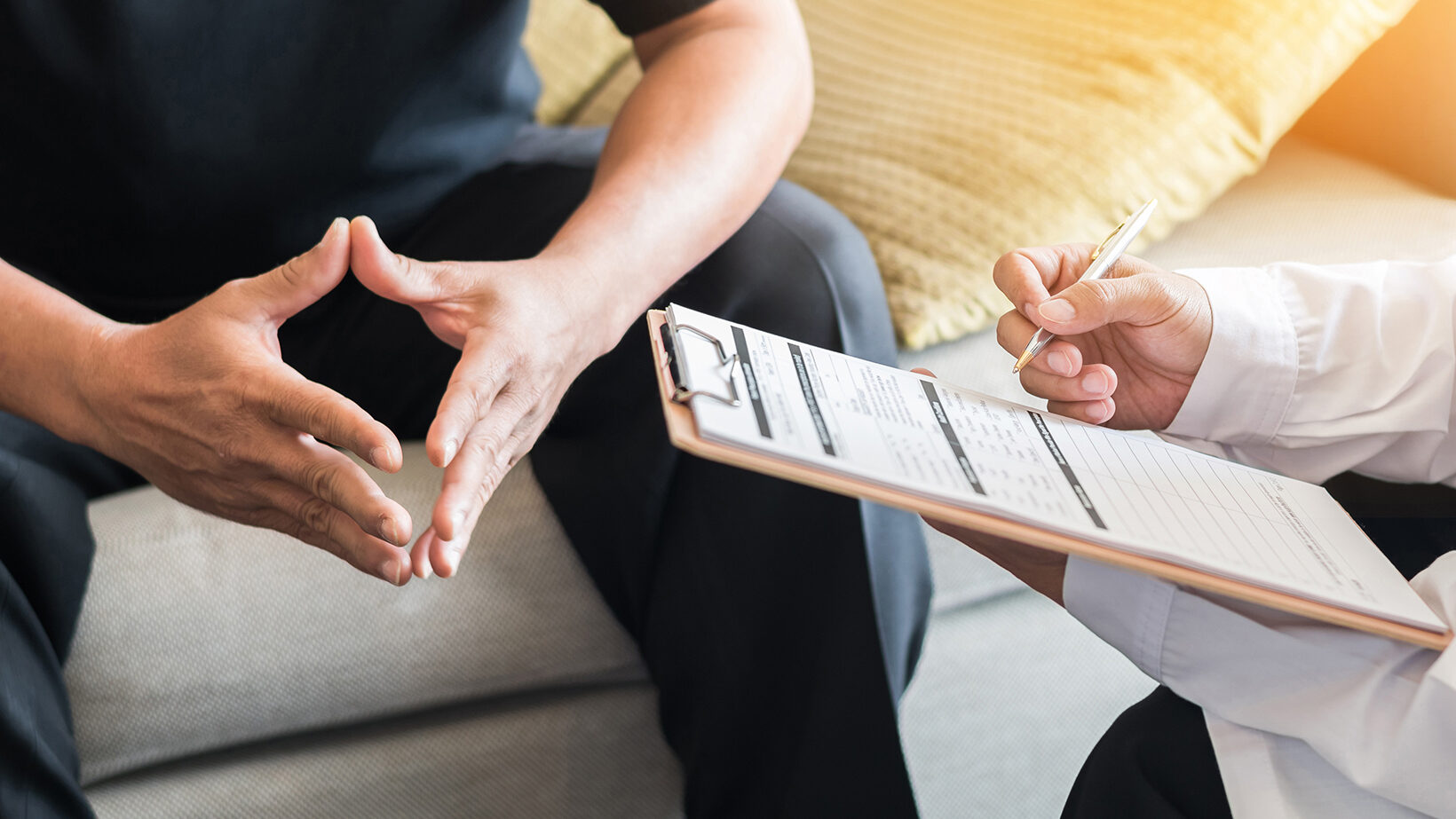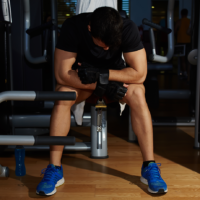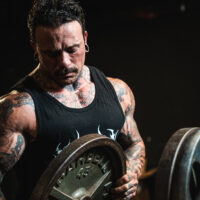Overtraining is a commonly used term within the fitness community to express a negative aspect toward pushing your body into a potential disaster by working out too much.
Widely disputed over the past decade, overtraining is very real and should not be ignored for many reasons.
The problem here is that there are many people who remain extremely dedicated to working out and enjoying a healthy lifestyle that they tend to forget about proper rest time and taking care of their bodies as well.
While it can be hard to comprehend, you can actually do serious damage to your body and run the risk of potentially fatal results if you start to ignore the symptoms of overtraining.
With the lack of responsibility for one’s health, more serious problems can arise seemingly out of nowhere.
Enter, Rhabdomyolysis, or most commonly known as Rhabdo.
A rare medical condition caused by improper wellness care and extreme physical activity.
This term is becoming increasingly popular lately as many notable fitness enthusiasts have come to understand it the hard way.
Let’s take a deeper look at what this condition is and how it’s crippling effects are making people more health-conscious when pushing those workouts to the extreme limitations.
What is Rhabdo?
Rhabdomyolysis occurs when the breakdown of muscle fibers release content directly into the bloodstream creating an overall toxicity which causes a sensation of over-exhaustion, fatigue and possible kidney damage. [1] [2]
Rhabdomyolysis can cause painfully draining symptoms along with a dark colored urine, muscle aches and a fever. [3] While in rare cases, some patients who were treated for this medical condition developed kidney damage or complete renal failure. [4] Certain complications in the early stages of Rhabdomyolysis can also include more serious matters such as cardiac arrhythmia and cardiac arrest. [5]
How Does it Happen?
While there are many different factors that can lead to this medical condition, the most notable causes stem from physical exhaustion corresponding to intense physical activity or overtraining.
Symptoms typically occur in acute episodes or in recurrent patterns [6] and have been linked to the following trigger points in one patient study such as improper nutritional intake, dehydration, alcohol consumption and most commonly, following extended workouts. [7]
Patients who have suffered from Rhabdo complain about irregular episodes of complete body aches followed along by extreme fatigue and disoriented feelings for an extended amount of time.
As the symptoms continue to go along without proper treatment, consequences can be more severe and can lead to life-threatening situations. [8]
Notable Influencers Who Have Suffered from Rhabdo
Current fitness influencer and 2013 Olympia women’s physique champion, Dana Linn Bailey recently took to social media to announce that she had been hospitalized back in April of 2019 due to the development of Rhabdomyolysis following a series of intense physical training.
Bailey confronted the seriousness of overtraining head-on and explained the dangers of ignoring your body’s physical well-being with a lengthy post on Instagram which caught the attention of many in the fitness industry.
I gave myself RHABDO, which is a RARE but actually VERY serious syndrome which can lead to kidney failure.
Many questions were raised due to Dana’s switch to a full CrossFit workout plan and the potential cause may have been due to the extremely high-intensity nature surrounding the specific workouts.
While there are many links to overtraining and Rhabdo, a recent study has also shown that a bodybuilder may have suffered from Exertional Rhabdomyolysis due to the overconsumption of creatine with their daily supplement intake. [9]
With more people experiencing this medical condition, it’s important to listen to your body as explained by Bailey and taking the necessary precautions when training to the highest level is extremely vital.
How to Prevent Rhabdo
Understanding the possible risks at hand, it is important to make sure your health is at the forefront of your concerns. You can still have a great training program and have intense workouts but it’s also nice to be safe at the same time.
So, if you’re worried about going to the gym for your daily workout, don’t be. The development of Rhabdo is rare and can be easily avoided with the following steps and preparation before heading to destroy the weights.
Proper Hydration
Staying hydrated is always important to your everyday health as your body consistently relies on water to flush out waste from the kidneys.
Drinking water will also help prevent dehydration during your workouts which is vital when your sweat production increases during training.
Taking Rest Days
Adequate rest time is important for muscle recovery and growth. At certain points, your body will make it known that it is feeling overworked and a rest day is required to help regulate your muscle fibers.
Listen to your body and do not ignore signs of physical and mental fatigue. If you’re not feeling 100% physically, it’s okay to take a much-needed rest day to help your body re-coop.
Pushing your body past its physical limitations can lead to serious harm and more damage than growth.
General Education and Awareness
Adhering to proper training plans and having awareness for your overall physical well-being is generally the most important way for Rhabdo prevention.
If you tend to workout with higher intensity, following the steps of proper hydration and general nutrition will work in your favor to reduce fatigue and muscle breakdown that could lead to Rhabdo.
Avoid High Dosage Medications for Anti-Inflammation
You may have seen the warning labels on the back of your over the counter pain medicine such as Advil advising not to take more than a specific amount within a 24-hour period due to potential negative effects on the kidneys and organ function.
If you’re physically drained and are trying to combat muscle soreness with pain medicine, your best bet is to avoid it all together.
By following the previous steps, you can help reduce soreness and fatigue much easier without putting your kidneys at even further risk.
Rhabdomyolysis can become present after intense periods of physical activity, this athlete knows and describes this first-hand.
Final Summary
Rhabdomyolysis is a serious medical condition often associated with overtraining and can lead to seriously debilitating issues such as kidney and renal failure.
If you’re noticing uncommon signs or side effects after your workouts, manage them wisely and strongly consider talking to your physician if they worsen over time.
By training smart and being health conscious, you can effectively train intense and develop muscular growth.
Chances are, you’re probably not going to get Rhabdo by having a few hard workouts and you will be just fine with your current training regime. However, it is important to note that following simple guidelines and not continuously pushing to exhaustion is always a great way to go about physical activity.
References
2. Ochsner J. 2015 Spring; 15(1): 58–69. Rhabdomyolysis: Pathogenesis, Diagnosis, and Treatment. Patrick A. Torres, MD, John A. Helmstetter, MD, Adam M. Kaye, PharmD, and Alan David Kaye, MD, PhD. https://www.ncbi.nlm.nih.gov/pmc/articles/PMC4365849/
3. Ochsner J. 2015 Spring; 15(1): 58–69. Rhabdomyolysis: Pathogenesis, Diagnosis, and Treatment. Patrick A. Torres, MD, John A. Helmstetter, MD, Adam M. Kaye, PharmD, and Alan David Kaye, MD, PhD. https://www.ncbi.nlm.nih.gov/pmc/articles/PMC4365849/
4. Ochsner J. 2015 Spring; 15(1): 58–69. Rhabdomyolysis: Pathogenesis, Diagnosis, and Treatment. Patrick A. Torres, MD, John A. Helmstetter, MD, Adam M. Kaye, PharmD, and Alan David Kaye, MD, PhD. https://www.ncbi.nlm.nih.gov/pmc/articles/PMC4365849/
5. JOHN M. SAURET, M.D. and GEORGE MARINIDES, M.D., State University of New York at Buffalo School of Medicine and Biomedical Sciences, Buffalo, New York GORDON K. WANG, M.D., Burnt Store Family Health Center, Punta Gorda, Florida Am Fam Physician. 2002 Mar 1;65(5):907-913. “Rhabdomyolysis” https://www.aafp.org/afp/2002/0301/p907.html
6. CMAJ. 2012 Mar 6; 184(4): 426–430. doi: 10.1503/cmaj.110518 Recurrent exercise-induced rhabdomyolysis Fady Hannah-Shmouni, MD, Kevin McLeod, MD, and Sandra Sirrs, MD https://www.ncbi.nlm.nih.gov/pmc/articles/PMC3291671/
7. CMAJ. 2012 Mar 6; 184(4): 426–430. doi: 10.1503/cmaj.110518 Recurrent exercise-induced rhabdomyolysis Fady Hannah-Shmouni, MD, Kevin McLeod, MD, and Sandra Sirrs, MD https://www.ncbi.nlm.nih.gov/pmc/articles/PMC3291671/
8. JOHN M. SAURET, M.D. and GEORGE MARINIDES, M.D., State University of New York at Buffalo School of Medicine and Biomedical Sciences, Buffalo, New York GORDON K. WANG, M.D., Burnt Store Family Health Center, Punta Gorda, Florida Am Fam Physician. 2002 Mar 1;65(5):907-913. “Rhabdomyolysis” https://www.aafp.org/afp/2002/0301/p907.html
9. Sports Health. 2014 Jul; 6(4): 336–339. doi: 10.1177/1941738114523544 Exertional Rhabdomyolysis in the Athlete A Clinical Review. David C. Tietze, MD*†‡ and James Borchers, MD, MPH† https://www.ncbi.nlm.nih.gov/pmc/articles/PMC4065559/








